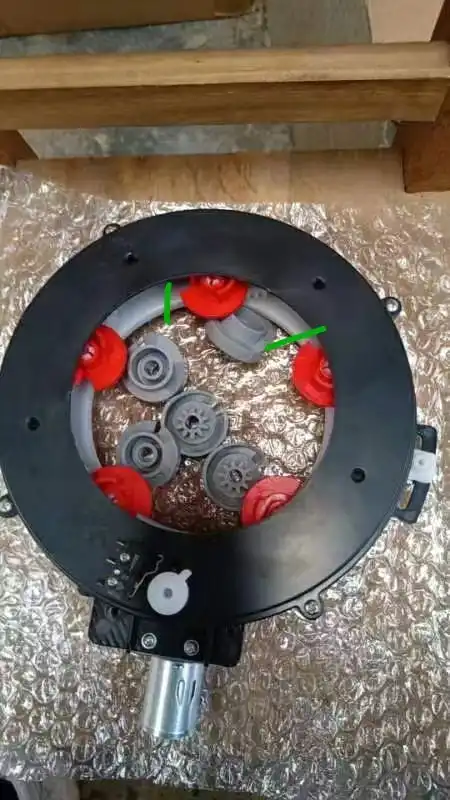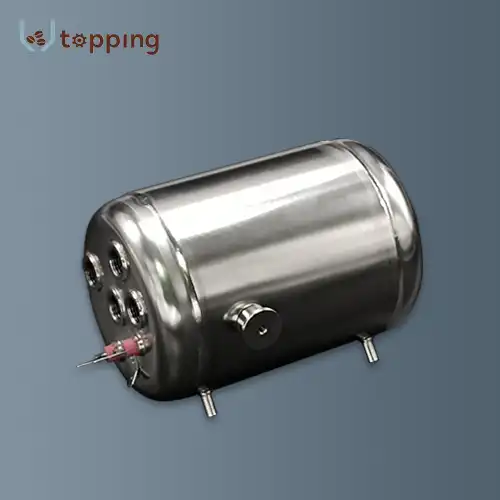What is the capacity of the Coffee Bean Hopper?
2024-12-16 11:30:34
Importance Of Coffee Bean Hopper Capacity
The capacity of a coffee bean hopper is a crucial factor that significantly influences the coffee-making process and overall user experience. Understanding its importance can help coffee enthusiasts and professionals make informed decisions when selecting a coffee machine or grinder. The coffee bean hopper, also known as a bean bin, is the container that holds whole coffee beans before they are ground. Its capacity directly affects how much coffee can be prepared without refilling, which is particularly important in both home and commercial settings.
A well-designed coffee bean hopper with an appropriate capacity ensures a consistent supply of fresh beans for grinding, which is essential for maintaining the quality and flavor of the brewed coffee. The capacity also impacts the frequency of refills, which can be a critical factor in busy environments like cafes or offices. Moreover, the right hopper capacity can help preserve the freshness of the coffee beans by limiting their exposure to air and light, which are primary factors in bean degradation.

Influencing Factors
The capacity of the coffee bean hopper has a significant impact on the coffee-making process, influencing several key aspects:
Coffee consumption is directly affected by the hopper capacity. A larger hopper allows for more beans to be stored, which in turn affects the concentration of coffee brewed each time. With a larger capacity, it's possible to maintain consistency in brewing larger batches of coffee without the need for frequent refills. This is particularly beneficial in high-volume settings where maintaining a consistent flavor profile is crucial.
Grinding frequency is another important factor influenced by hopper capacity. A larger capacity means that beans can be stored for a longer period, reducing the frequency of grinding. This has a direct impact on coffee bean oxidation. Coffee beans start to oxidize as soon as they're exposed to air, which can affect their flavor. By reducing the frequency of opening the hopper to refill, a larger capacity can help maintain the freshness of the beans for a longer period.
Usage scenarios play a significant role in determining the ideal hopper capacity. Different environments have varying requirements. For home use, a smaller capacity might be sufficient, as the coffee consumption is typically lower and more consistent. In an office setting, a medium to large capacity might be more appropriate to cater to multiple users throughout the day. Coffee shops and restaurants often require large capacity hoppers to meet high-volume demands and ensure efficient service during peak hours.
Common Coffee Bean Hopper Capacity
The capacity of coffee bean hoppers varies widely depending on the type of coffee machine and its intended use. Here's an overview of common capacities for different types of coffee equipment:
Home coffee machines typically have hoppers with capacities ranging from 250g to 500g. This range is generally sufficient to meet the daily needs of a household. A 250g capacity can provide approximately 30-35 cups of coffee, depending on the brewing method and strength preference. This size is ideal for those who prefer to use fresh beans and refill the hopper more frequently. The 500g capacity is suitable for larger households or those who consume more coffee, providing around 60-70 cups before needing a refill.
Commercial coffee machines, designed for high-volume use in cafes, restaurants, and large offices, often feature larger hoppers with capacities of 1kg or more. Some commercial-grade machines can have hoppers that hold up to 2-3kg of beans. These larger capacities are essential for meeting the demands of high-frequency use, reducing the need for constant refills during busy periods. A 1kg hopper can produce approximately 120-140 cups of coffee, making it suitable for medium-sized cafes or offices.
Hand-grinding coffee machines, which are often used by coffee enthusiasts who prefer a more hands-on approach, typically have smaller capacities. These hoppers usually range from 50g to 150g. The smaller capacity is due to the manual nature of these grinders and the emphasis n freshness. A 50g capacity is suitable for 6-7 cups of coffee, while a 150g capacity can produce around 18-20 cups. These smaller capacities encourage users to grind only what they need, ensuring maximum freshness.
How to Choose The Right Capacity
Selecting the appropriate coffee bean hopper capacity depends on several factors, including personal needs, the type of coffee machine, and space limitations.
Personal needs play a crucial role in determining the ideal hopper capacity. Coffee consumption is a primary consideration. For individuals or families who consume large amounts of coffee daily, a larger capacity hopper would be more convenient, reducing the frequency of refills. However, for those who prefer variety and frequently change coffee beans, a smaller capacity might be more suitable to ensure the beans remain fresh.
The freshness of coffee beans is another important factor. Coffee beans begin to lose their flavor and aroma soon after roasting, and this process accelerates once the beans are ground. For those who prioritize freshness and prefer to use beans within a week or two of roasting, a smaller capacity hopper might be more appropriate. This encourages more frequent refills with fresh beans.
Different types of coffee beans may also influence the choice of hopper capacity. Darker roasted beans, which have oils on their surface, may not be suitable for storage in large quantities in a hopper as they can become rancid more quickly. Lighter roasts, on the other hand, can typically be stored for longer periods without significant degradation in flavor.
The type of coffee machine is another crucial factor in determining hopper capacity. Fully automatic coffee machines often come with larger hoppers to accommodate their ability to produce a variety of coffee drinks at the touch of a button. These machines might have capacities ranging from 500g to 1kg or more, suitable for households or small offices that consume a lot of coffee.
Semi-automatic coffee machines, which require more user input in the brewing process, often have more flexible hopper capacities. These can range from small (200-300g) to large (500g or more), allowing users to choose based on their specific needs and preferences.
Space limitations can also influence the choice of hopper capacity. For those with limited kitchen space, a coffee machine with a smaller hopper might be more practical. Compact machines with hoppers in the 250-300g range can fit comfortably in most kitchens while still providing enough capacity for daily use.
Coffee Bean Hopper For Sale
When considering coffee bean hoppers, it's important to note that different manufacturers offer various capacities to suit different needs. The Topping Motor Coffee Bean Hopper, for instance, offers capacities of 2L and 4L. These larger capacities are particularly suitable for commercial settings or high-volume home use. A 2L hopper can hold approximately 600-700g of coffee beans, while a 4L hopper can accommodate around 1.2-1.4kg, depending on the density of the beans.
For those in the market for coffee bean hoppers or looking to upgrade their current setup, it's crucial to consider factors such as capacity, material quality, and compatibility with your existing equipment. If you're exploring options from reputable Coffee Bean Hopper manufacturers, you can reach out to sales@huan-tai.org for more detailed information and guidance on selecting the right hopper that meets your specific needs and preferences.
References
1. Specialty Coffee Association. (2023). "Coffee Freshness and Storage Best Practices."
2. Journal of Food Science. (2022). "Effects of Storage Conditions on Coffee Bean Quality."
3. International Journal of Food Science and Technology. (2021). "Comparative Study of Coffee Bean Storage Methods."
4. Coffee Science Foundation. (2023). "The Impact of Oxidation on Coffee Flavor."
5. Food Chemistry. (2022). "Analysis of Volatile Compounds in Stored Coffee Beans."
6. European Food Research and Technology. (2023). "Coffee Machine Design and Its Impact on Brew Quality."


.webp)
.webp)


